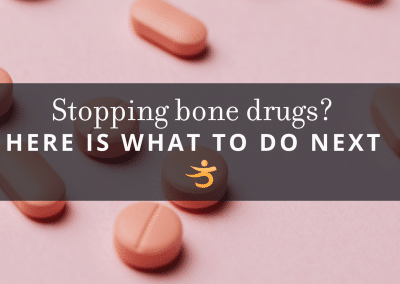For some time now we have been hearing reports of strange jaw bone decay (osteonecrosis) associated with the use of Fosamax® and other bisphosphonate osteoporosis drugs including Actonel® and Boniva®. We have been told, however, that the risk of this frightful side effect (1) was extremely low (on the order of 1/1000 of a percent) and (2) involved those taking the bone drugs intravenously. As the dust clears and non-commercially financed studies are surfacing however, we see a different story. As recently reported by the University of Southern California Dental School in Los Angeles, the risk of jaw bone damage from oral bisphosphonate use is both real and significant.
This 2008 study looked at Dental School patients who were on, or had taken, Fosamax and who also were being treated for active osteonecrosis of the jaw (a “rotting” or death of jaw bone tissue). The study identified 208 patients with a history of Fosamax use and found that 4% of these had active osteonecrosis of the jaw. All osteonecrosis cases occurred after either simple tooth extraction or denture trauma that resulted in jawbone exposure. In 4% of all cases, the jaw was simply not able to heal itself from the trauma of tooth extraction or other injury. This is not an insignificant number and it is a far cry from the 1/1000 of a percent risk previously suggested by medical authorities. On the other hand, of the University’s 13,522 patients without a history of Fosamax use, 4,384 underwent tooth extraction without a single development of post-surgery jaw osteonecrosis.
From the Better Bones Perspective, this is not at all surprising. There are likely many mechanisms by which these osteoporosis drugs damage the self-repair capacity of bone. For one, the drugs greatly reduce not only the unwanted bone breakdown, but they also equally reduce the desired new bone build-up. This curtailing of bone renewal limits the self-repair, self-renewal process of bone breakdown and build-up. The development of “jaw rotting” after jaw bone trauma is one manifestation of this severe repair deficit.
Reference:
Sedghizadeh, PP, et al. 2009. Oral bisphosphonate use and the prevalence of osteonecrosis of the jaw: An institutional inquiry. J Am Dent Assoc, 140(1):61-66.








